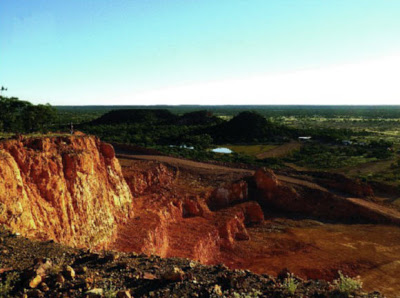
Australia produces over 90 percent of the world’s supply of opal. “Before this we did not know its origin, why it forms at such shallow depths or why it can be found in central Australia and almost nowhere else on Earth,” Prof Rey said.
“The formation of Australian opal was due to an extraordinary episode of acidic weathering, during the drying out of the central Australian landscape.”
These processes occurred when the Eromanga sea, a vast body of water covering 60 percent of Australia, extending from Coober Pedy to the Carpentaria Basin and across to Lightning Ridge, started retreating.
“Between 100 and 97 million years ago this sea came to cover a much smaller area. This meant the previously inundated central Australian landscape started drying out and acidic weathering happened on a massive scale when pyrite minerals released sulfuric acid,” Prof Rey explained.
Acidic weathering of the type that took place in Central Australia is unique on Earth at that scale, covering an estimated 1.3 million sq. km, but it has been described at the surface of Mars.
“The United States and the European community have invested billions of dollars to send orbiters and rovers to Mars in the hope of finding extra-terrestrial life but Central Australia offers a unique natural laboratory where potential Martian bio-geological processes could be studied,” concluded Prof Rey, who reported the findings in a paper in the Australian Journal of Earth Sciences.
Reference:
Bibliographic information: P. F. Rey. 2013. Opalisation of the Great Artesian Basin (central Australia): an Australian story with a Martian twist. Australian Journal of Earth Sciences: An International Geoscience Journal of the Geological Society of Australia, vol. 60, no. 3; DOI: 10.1080/08120099.2013.784219










